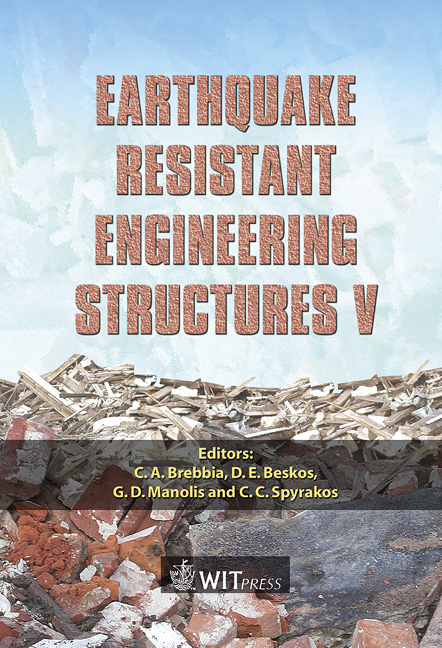Evaluation Of Economic Loss For Structures In The Area Struck By The 7/9/1999 Athens Earthquake And Comparison With Actual Repair Costs
Price
Free (open access)
Transaction
Volume
81
Pages
10
Published
2005
Size
2,676 kb
Paper DOI
10.2495/ERES050291
Copyright
WIT Press
Author(s)
V. A. Lekidis, Ch. Z. Karakostas, I. I. Sous, A. Anastasiadis, A. Kappos & G. Panagopoulos
Abstract
Reliable loss assessment (in monetary terms) for buildings struck by an earthquake is an essential factor in the development of seismic risk scenarios for a given urban area. The evaluation of the seismic risk for a certain region depends both on the seismic hazard and the vulnerability of the building stock in the area. For the evaluation of building vulnerability, a hybrid methodology was recently proposed for the estimation of vulnerability (fragility) curves and the corresponding damage probability matrices. The methodology is applied here to the municipality of Ano Liosia, in the meisoseismal area of the Athens, Greece earthquake of 7/9/1999, for both reinforced concrete (R/C) and unreinforced masonry (URM) buildings. An in-situ survey of 150 building blocks was performed, and data regarding the structural type, actual earthquake damage and corresponding repair costs were collected. The actual repair cost for the area was compared with the economic loss estimation obtained using the hybrid methodology and various estimates of the seismic action in the area considered. The analytical economic loss assessment was found to agree, to a satisfactory degree, with the actual repair costs, for certain seismic hazard scenarios. Keywords: seismic risk scenarios, loss assessment, vulnerability of buildings, fragility curves, damage probability matrices.
Keywords
seismic risk scenarios, loss assessment, vulnerability of buildings, fragility curves, damage probability matrices.





